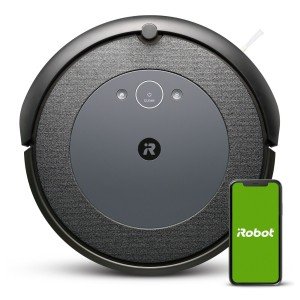Revolutionizing Home Maintenance: The Rise of Cleaning Robots
In an age where technology continues to affect everyday life, cleaning robots have become a significant innovation in the field of domestic cleaning. These autonomously operating devices have redefined how households handle cleaning jobs, supplying convenience and efficiency. With their capability to browse areas, avoid barriers, and operate on pre-set schedules, cleaning robots are ending up being important tools for property owners wanting to enhance both their time and their living environment.
The Evolution of Cleaning Robots
Cleaning robots have gone through a remarkable transformation since their beginning. What started as fundamental devices has advanced into advanced devices equipped with sophisticated functions. Below is a table highlighting some essential milestones in the development of cleaning robots.
| Year | Turning point | Description |
|---|---|---|
| 1996 | First Commercial Robot | The very first robotic vacuum, Electrolux's Trilobite, was presented. |
| 2002 | Roomba Launch | iRobot launched the Roomba, making robotic vacuum cleaners popular. |
| 2004 | Mapping Technology Introduced | iRobot presented smarter navigation abilities, permitting much better cleaning paths. |
| 2012 | Smart device Integration | The introduction of mobile app control enabled users to manage robots from another location. |
| 2020 | Advanced Sensors & & AI | Robots began using AI for boosted mapping and item recognition. |
Types of Cleaning Robots
As technology has actually advanced, different types of cleaning robots have actually appeared, each designed to cater to various cleaning needs. Some of these include:
Robotic Vacuums
- Developed to autonomously vacuum floors, they typically feature sensing units to navigate around spaces and go back to their charging stations.
Robotic Mops
- These robots are geared up with mopping functionality, making use of water or cleaning options to scrub floorings.
Window Cleaning Robots
- Specifically engineered for window cleaning, these devices can climb vertical surfaces using suction or magnetic systems.
Swimming Pool Cleaning Robots
- Created for in-ground pools, these robots gather particles and even scrub the walls of the pool efficiently.
Multi-tasking Robots
- Some contemporary cleaning robots combine vacuuming and mopping capabilities, offering flexible cleaning services.
How Cleaning Robots Work
The core functionality of cleaning robots is focused around their capability to navigate homes autonomously while executing cleaning jobs. Here's a breakdown of the essential elements that enable them to carry out efficiently:
- Sensors: Most cleaning robots are geared up with sensors that help them discover obstacles, slopes, and edges, preventing falls and collisions.
- Navigation Technology: Many robots utilize a combination of gyroscopes, accelerometers, and in some cases cameras or LIDAR for navigation. This enables them to map their environment and tidy effectively without missing spots.
- Power Sources: Most cleaning robots operate on rechargeable batteries, with lots of efficient in going back to their charging docks when their power runs low.
- Cleaning Mechanisms: Whether through suction for vacuuming or rotating brushes for mopping, cleaning robots include various mechanisms tailored for effective dirt removal.
Advantages of Cleaning Robots
The incorporation of cleaning robots in households provides several benefits:
- Time-Saving: Cleaning robots can operate on their own, enabling homeowners to take part in other activities.
- Consistent Cleaning: With scheduled cleaning times, these robots ensure consistent upkeep of the home.
- Hard-to-Reach Areas: Cleaning robots can access narrow areas and corners that traditional cleaning tools might have a hard time with.
- Reduced Allergens: Regular cleaning assists decrease dust and irritants, contributing to a healthier living environment.
Limitations of Cleaning Robots
Despite their lots of advantages, cleaning robots also present particular limitations that users must think about:
- High Initial Cost: While the price of cleaning robots has reduced with time, some innovative models can be reasonably pricey.
- Irregular Performance: Not all robots carry out similarly; some may have problem with specific surfaces or dirt types, leading to unsatisfactory results.
- Limited Capacity: Many robotic vacuums have smaller sized dustbin capacities, requiring more regular emptying than standard vacuum cleaners.
FAQs about Cleaning Robots
Q: Are cleaning robots worth the investment?A: Cleaning robots can be
a beneficial investment for those seeking time-saving solutions. They can substantially relieve the cleaning problem, especially for busy homes. Q: Can cleaning robots be programmed?A: Yes, numerous cleaning robots come with programmable schedules and modes, permitting users to set specific cleaning times and areas. Q: How do I keep my cleaning robot? automatic floor cleaner : Regular maintenance includes cleaning the brushes, clearing the dustbin, and occasionally looking for software application updates. Q: Are cleaning robots reliable on all surfaces? automatic cleaning robot : Most robotic vacuums work on hard floors and low-pile carpets. However, efficiency may
differ on thick carpets or particular types of rugs. Q: Do cleaning robots work well under furniture?A: Cleaning robots are created to fit under the majority of furniture; however, the efficiency can depend on the height of the furniture.
Cleaning robots represent an advancement in the realm of
domestic chores, offering a mix of technology, convenience, and effectiveness. While they are not a total replacement for conventional
cleaning methods, they substantially boost housekeeping abilities. As developments continue, future models of these devices are anticipated to end up being much more intelligent, effective, and easy to use, additional integrating into the smart homes of tomorrow. The modern house owner hence faces an interesting future where cleaning robots could take much of the drudgery out of home maintenance, enabling a cleaner home with minimal effort.

